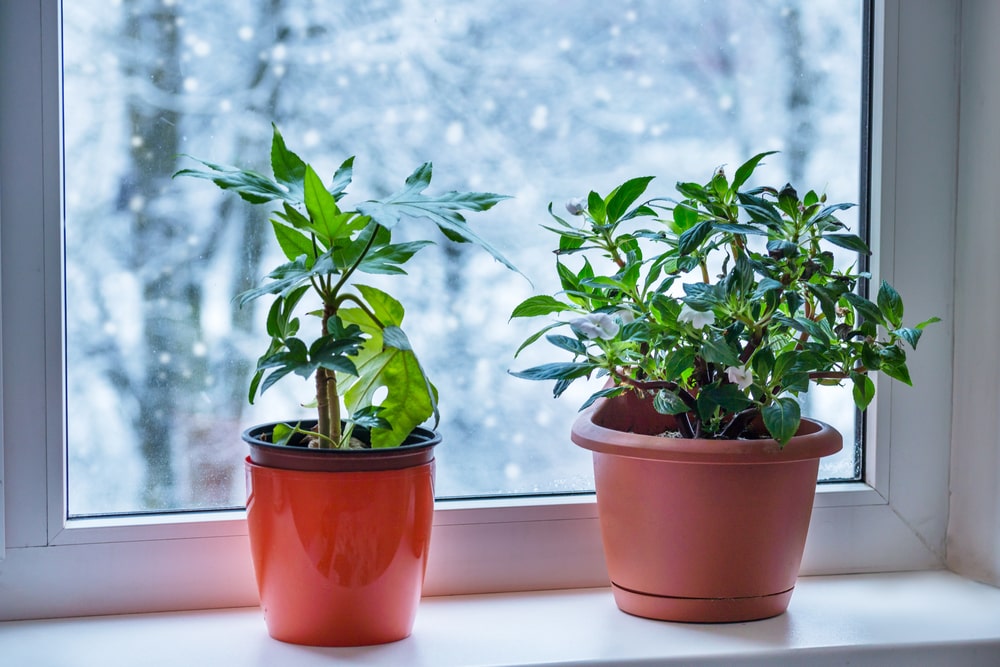Now that your houseplants have all been moved back inside, here are a few things to consider.
Yellow Leaves
Yellow leaves can be a sign of two very different problems. They are often a sign that plants that need high light aren’t getting it. Check the light requirements of your particular plant. Ficus trees (Weeping Figs) and Citrus are particularly famous for this. Moving them to a window with several hours of direct sun should help. With citrus, if you have less than five or six hours, then pick the sunniest possible window and augment it with a grow light.
Yellow leaves can also occur if a plant has gotten too dry. A peace lily that has wilted, for example, will perk up once you water it, but a couple of weeks later, yellow leaves may show up. Plants like to dry out partially but should never go so dry that the leaves wilt or curl.
Brown Edges on Leaves
Two very different problems can also cause brown edges. On plants with particularly delicate foliage, like ferns, for instance, brown edges can be a sign that the plant hates our dry indoor areas. Putting a humidifier in the room or lightly misting the foliage can help.
Brown edges can also be a sign of over-watering. We sometimes forget that plants need air as much as they need water and only get it when the soil is allowed to dry out PARTIALLY before watering. Some plants, like ficus, schefferas, and citrus, should dry out several inches down—not bone dry to the bottom of the pot.
Clear Sticky Sap
Occasionally, certain flower buds can secrete a little sap from the tip. If the sap is only on the buds and you examine the plant to be sure there are no other problems, this may be the cause. Clear sticky sap on the foliage, however, could be honeydew. Honeydew is a secretion from insects like aphids, mealy bugs, or scale. Examine the plant carefully for scale (little raised light or darker brown bumps that can be flaked off with a fingernail) or for mealy bugs (looks like little bits of white cotton lint).
Gnats Around Your Plants
These are most likely fungus gnats. Their larvae eat decaying organic debris on the soil (and can nibble on plant roots, too) and can signal that your plants are staying too damp. Allowing the soil to dry out a little will usually address the problem. In the meantime, yellow sticky traps will help trap the adults. You can also treat your soil with a bleach solution. Pull one gallon of water and allow it to stand overnight. Then add four tablespoons of bleach until it runs out the bottom. This drench is also suitable for ants or slugs in the soil.
Your Plants Don’t Like Hot or Cold Air
Remember that plants do not care for hot or cold air blowing directly on them, so be careful about placing them near outside doors or heating vents. If you have heating vents in the ceiling or floor, check at a hardware store for deflectors that will help direct the airflow out into the room.
Hold Off on Repotting, Pruning, or Fertilizing
Winter is not a good time to repot, prune, or fertilize indoor plants. Even though they don’t go dormant as many of our outdoor plants do, they are responding to the lower light levels and shorter days by slowing down. Wait until March, if possible.
If you have any concerns or questions, that’s what we’re here for.

